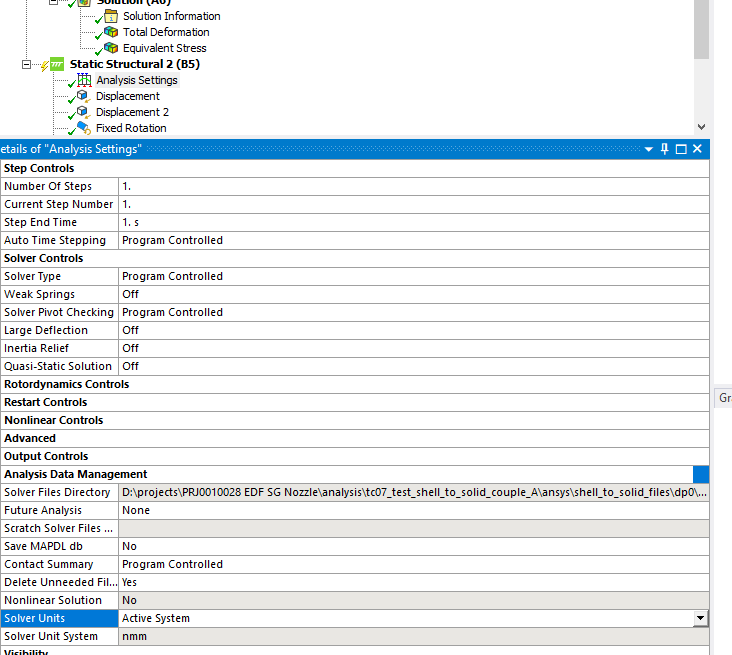-
-
January 3, 2024 at 7:54 pm
helen.durand
SubscriberHello,
In general, should I expect the direct/sparse solver or the iterative/PCG solver to give roughly the same results (stress, strain, deformation), if converged, for Transient Structural simulations?
I currently am running a Transient Structural simulation of an additive manufacturing process (so there are command objects that implement progressive birth/death), which get temperature loads from a Transient Thermal simulation (which has command objects to add heat generation).
I ask this because sometimes changing solvers seems to help the simulation run (i.e., avoid certain errors) in some situations (depending on other simulation parameters such as the length of each load step, mesh size, and using linear vs quadratic elements). I am not sure if switching solvers is an acceptable way to address these simulation issues.
Thank you!
-
January 4, 2024 at 9:18 am
Aniket
Forum Moderatorboth the direct/sparse solver and the iterative/PCG solver can indeed provide similar results (stress, strain, deformation) if they have properly converged for Transient Structural simulations. However, the choice between the two can depend on the specific requirements of your simulation and the resources available. For instance, the direct solver (SPARSE solver) is often recommended for models with around 1 million degrees of freedom. However, it's worth noting that it requires significantly more RAM compared to the PCG solver. For a 3D model with 300,000 nodes or a shell/beam model with 150,000 nodes, the sparse solver will need 10 GB of RAM while the PCG solver only needs 1 GB.
/knowledge/forums/topic/can-you-explain-the-following-error-message-preconditioned-conjugate-gradient-solver-error-level-1-possibly-the-model-is-unconstrained-or-additional-iterations-may-be-needed-try-running-settin/
In terms of performance trends, there are areas where SPARSE is more efficient, areas where either SPARSE or PCG can be used, and areas where the PCG solver works faster. It's recommended to evaluate Sparse & PCG behavior & speedup on your own model.
https://ansys13.ansys.com/KnowledgeArticles/Phase-1/2058616/2058616.pdf
In conclusion, switching solvers can indeed be a valid approach to address certain simulation issues, but it's crucial to consider the specific requirements of your simulation and the resources available.
-Aniket
-
January 4, 2024 at 11:27 am
dave
SubscriberI have also found that switching solvers can help the analysis to solve. I find that using the direct sparse option for relatively large structural jobs is usually quicker assuming it stays "in core" or in other words, there is sufficient RAM for the solution to use. I used to find for especially large jobs, if it was too big to run in core and effectively bombed out, the pcg itterative solver would work instead. However, these days with improvements to ansys and improvements to the size and speed of hard disks, it is less of an issue. To answer your question, I would expect the results should be approximately the same with either solver (there might be a little rounding).
I do also recall several years ago some analysis that was a particularly large model running on a remote solver where we had some problems during the solve. The solve used the distributed option, it had contact so was non-linear. As I recall, the model would occasionally not solve with distributed mode, however it was a while ago so may have been a bug that is now fixed.
You can also try changing the unit system, as I find that can help solve the model if any of the numbers are particualy big or small, it can cause issues.
-
- The topic ‘Direct vs iterative solver’ is closed to new replies.



-
4678
-
1565
-
1386
-
1241
-
1021

© 2025 Copyright ANSYS, Inc. All rights reserved.








